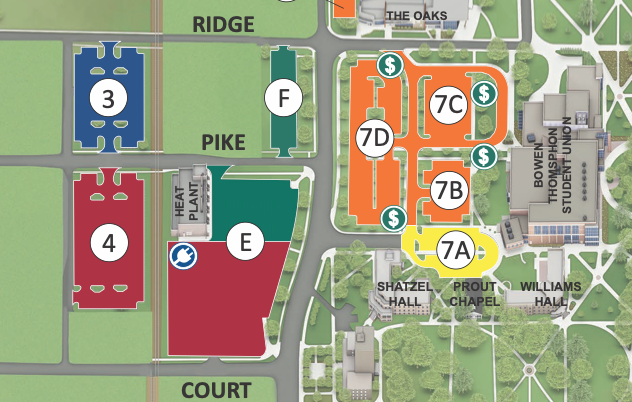The University’s program to reduce costs and eventually charge for printing began this semester, but not in the way some students might have expected.
While the Print Responsibly program has started, the actual charging will not begin until next fall.
“Well, the confusion could have been that we did say that the project was going to start in January, and it did,” said Bruce Petryshak, chief information officer. “But that could have been interpreted that it would all be running and active. Something this large, when started, it takes a while to [fully] implement.”
One goal of the program is to reduce costs associated with power, paper and ink consumption. This is being done through a contract with ComDoc, an independent company which will handle the equipment and supplies and supply three full-time staff members for maintenance. All of the new equipment will be manufactured by Xerox.
This means the University will not own printers anymore, said Dave Kielmeyer, senior director of communications.
Because of this, students and departments will have to pay an undetermined per-page cost but it will be less than most competitive prices in the market, Petryshak said.
He said the price for color printing will also be greatly reduced.
According to the Print Responsibly Web site, the price will only be used to cover the University’s costs for printing, there will not be a markup.
Saving money is just part of the program’s overall goal, the program is also a green initiative, Petryshak said.
ComDOC dismantles its equipment, saves parts that can be reused and recycles instead of disposing in landfills. The packaging for their consumables is also environmentally friendly.
Petryshak said the University uses at least 70 million pages of paper a year, not including paper used by non-networked printers. He said the target for the beginning of the program is to reduce by 10 million pages.
By using more efficient hardware, the program will also reduce energy consumption.
The University’s total estimated savings created by the program is $1.5 million a year.
The student side of the printing program is currently being tested on a small scale internally, though the software is already installed in the labs.
During the summer, the program will go in to place, but students will still not have to pay.
This dry run will be used to monitor and fix any errors before the actual launch in Fall 2010.
To print, a student will just need to sign in to a computer with their BGSU username and password. This means students who forget to log off in labs will need to be more careful, Petryshak said.
The only safeguard against forgetting to log off is that computers do so automatically after 10 minutes of inactivity, said Josh Von Lehmden, support services supervisor.
Upon printing, students will be given a confirmation prompt.
“We are still working on details of what that will be, but it will be some sort of accounting information,” Lehmden said.
He said it will likely confirm the print, the number of pages and how much it will cost. Prices are undetermined at this time.
If a printed item jams or prints incorrectly, a lab monitor will be able to reprint items for free. How this will work in the residence halls, which will still be maintained by the Residential Commuting Connection, is still being worked out, Petryshak said.
The program’s effect on faculty and staffThe faculty/staff side of the printing program is being discussed with each department.Deb Wells, the director of client services/web development, and Lehmden will meet with department chairs to determine specifics. Items such as device usage, work flow and if devices can be consolidated with new equipment will be used to
construct a plan to fit the needs of each department.
“After we have the meeting with the offices, then the ComDoc person comes back and puts together a packet, and it just shows the information that was discussed at the 101 meeting with the departments,” Wells said. “We share that with them and we have some communication back and forth, about some tweaking here and some tweaking there.”
The 50 to 60 departments that have been met with had an average of 40% reduction in equipment, Petryshak said.
“It is also about efficiency,” said Dave Kielmeyer, senior communications director. “For instance, my office has two laser printers, a copier which is also our fax machine, and the boss has an ink jet on her desk, well that might go down to two printers, one of which is also the copier, the scanner and the fax.”
Wells said many departments will also be getting scanners and duplex will become a default setting for printing. In addition to efficient equipment, services such as faxing will become more streamlined. Instead of printing off a page and feeding it through a fax machine, there will be a centralized fax server. Petryshak said this means individuals will be able to send a fax or PDF directly from the computer, eliminating the need to print first.
The software that drives the pay-per-page system will be installed and tested during the Spring semester.













